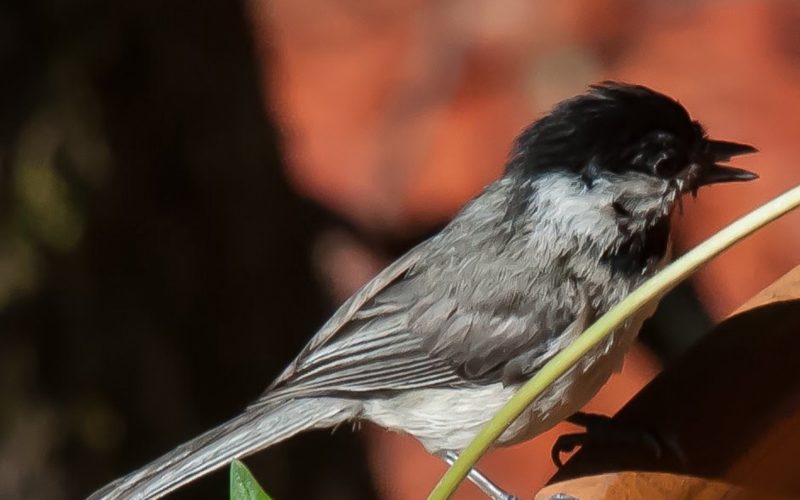AMANDA BANCROFT
Making Ripples
Like many of our native birds — cardinals, blue jays, woodpeckers, vultures, and owls, to name a few — chickadees don’t migrate. Despite their small size, they overwinter here, huddled together against the cold and eating enough each day to stay alive. Arkansas has much easier winters compared to northern climates where chickadees spend the winter. For example, Alaskan chickadees really have it rough with 18-hour nights, yet they survive.
It may seem like chickadees would have an advantage if they flew south, but migration is perilous, and birds that remain here year-round can save energy, spend more time nurturing young and defend prime territories earlier than migrating birds arriving in the spring.
Overwintering birds will change their food preferences to adapt to the cold and lack of insects. Chickadees love to eat sunflower seeds at feeders. Several studies have shown that they do survive at higher rates with access to feeders during harsh winters, but they don’t become dependent on feeders during milder winters, surviving at the same rates as chickadees without feeders. Besides feeder seeds, chickadees consume insect eggs, frozen insects and wild seeds.
Chickadees forage with tufted titmice and other species during winter months. These larger flocks are better able to find and share sources of food. Chickadees cache food and remember where it is, not unlike our pantries. The U.S. Fish and Wildlife Service explains that “compared to many other birds, chickadees have a large hippocampus” — the part of the brain that’s responsible for spatial memory. In the fall, this part of their brain gets even bigger!
According to BirdNote.org, chickadees use three main adaptations to survive: “They’re insulated, they’re active, and they have a good memory.” Chickadees maintain 100-108 degree body temperatures during daytime (even when outside temperatures are zero degrees) which drops about a dozen degrees at night to help preserve fat. This is called “nightly hypothermia”! Their body weight fluctuates each day, too. Daytime feeding helps them gain fat, and nightly winter temperatures burn it off.
At night, chickadees roost in tree cavities and nest boxes with their own kind as well as other species. The additional body heat and small spaces keep birds warmer and protected from wind and weather. Researchers have found that not all holes are equal. Birches, evergreens and specific small spaces are preferred over others. If you have a little one who loves a great picture book, “Chickadees at Night” by Bill O. Smith and illustrated by Charles R. Murphy is a funny, cute story that ponders what chickadees do with their time (available on Amazon). As Santa flies overhead on Christmas Eve, remember that out there in the dark somewhere are hardy chickadees.
Amanda Bancroft is a writer, artist, and naturalist living in an off-grid tiny house on Kessler Mountain. She and her husband Ryan blog about their adventures and offer tips to those wanting to make a difference at www.RipplesBlog.org.










